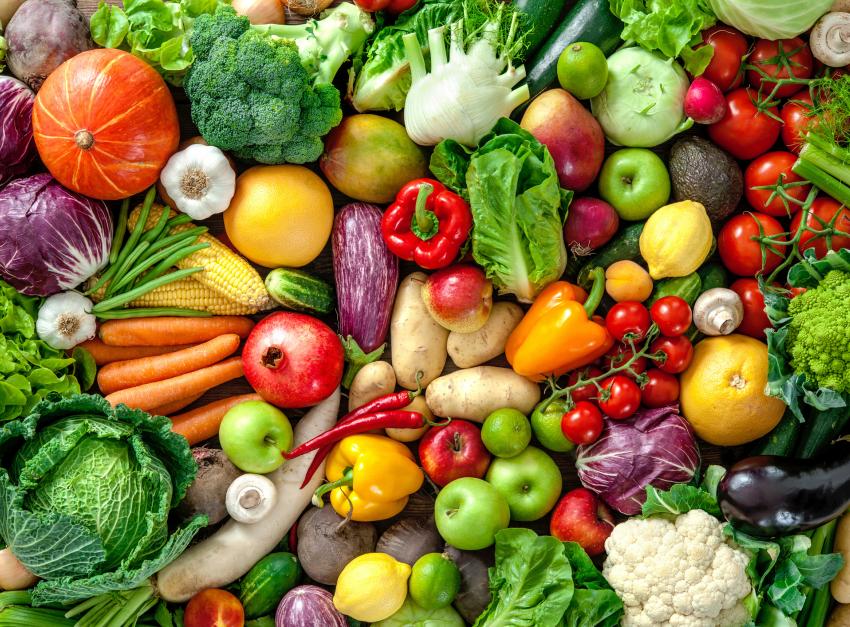
- Ali
We’re all bombarded with healthy claims about the latest ‘super food’ but what are these so called superfoods and are they so super?
I say ‘so-called’ because there is no official definition of a "superfood" and the EU has banned health claims on packaging unless supported by scientific evidence. But as we all know, that hasn't stopped many food brands from funding academics to research the health benefits of their product.
We’re all very aware that healthy lifestyle choices, including eating a wholefoods based diet and reducing highly processed and refined foods together with reducing stress and increasing exercise, can reduce our risk of chronic diseases like heart disease, stroke and cancer.
But when foods like Blueberries and pomegranate juice taste so delicious and look so attractive it’s easy to be swept away with the claims that they are ‘super foods’ and eat them to excess. It would also be easy to think that eating salmon and quinoa a few times a week would counter the ill effects of over indulgence in highly processed, overly sweet foods, but it’s simply not the case.
Possibly a better approach is to look at a super diet – A diet rich in healthy whole foods, plants, organic meat and poultry, fresh fish, antioxidants, healthy fats and omega 3s. That’s exactly what I advocate on my 30 days to healthy living plan. It’s designed to kick start you on a healthy wholefoods diet and rid you of known toxins so you can reset your bodies balance, so to speak.
So what would be on my list of ‘super diet’ foods
Blueberries
These top my list of course. They look good, they taste good and they are a good source of vitamin K. They also contain vitamin C, fibre, manganese and other antioxidants (notably anthocyanins) which help us age more slowly.
Valued for their high levels of antioxidants, some nutritionists believe that if you make only one change to your diet, it should be to add blueberries. Die-hards claim blueberries can help protect against heart disease and some cancers, as well as improve your memory.
What I do
If I’m feeling a little peckish mid morning I’ll snack on a handful of blueberries alongside some pre soaked almonds. I add them to smoothies, shakes and breakfast bowls too. I’ve even been known to add them to a salad.
Chocolate
Now we’re not talking Cadbury’s here! Sorry Mr Cadbury. Recent interest in the health benefits of chocolate was sparked by studies on the cocoa-drinking peoples of Central America.
Researchers observed that the Kuna Indians of Panama, who drank cocoa as their main beverage, had very low blood pressure, the opposite of which is a leading cause of heart disease and stroke. But the sort of chocolate we eat in the West is a highly processed and sweetened food produced from cocoa. Cocoa is a good source of iron, magnesium, manganese, phosphorous and zinc. It also contains the antioxidants catechins and procyanidins.
What I do
Far better than a processed chocolate bar is a small amount of homemade chocolate bark made using cocoa and coconut oil. I might snack on this or add unrefined cacao to my smoothie.
Oily fish
Oily fish such as salmon, mackerel and sardines are said to help fight against cardiovascular disease, prostate cancer, age-related vision loss and dementia. It is a good source of vitamin D, protein, some B vitamins and selenium. It’s also a rich source of omega-3 fatty acids, a type of fat that is good for our health. Even the UK government recommend you eat 2 portions of fish a week one of which should be from oily fish.
What I do
Some of my favourite recipe sin my 30 days to healthy living plan use fish or oily fish. The whole family loves Salmon burgers and salmon skewers made with chunks of salmon and gilled peppers, tomato and courgette or aubergine.
Wheatgrass
Believe it or not Wheatgrass was discovered back in the 1930’s but has come into the popular ‘super food’ group of late. It’s claimed that is has a higher nutritional content than any other vegetable, protects against inflammation, builds red blood cells and improves circulation.
Wheatgrass contains chlorophyll, vitamin A, vitamin C, vitamin E, iron, calcium and magnesium. As chlorophyll is closely related to our haemoglobin (a protein that carries oxygen around your body) it’s thought that taking wheatgrass juice enhances haemoglobin production.
What I do
I like to add it to a smoothie as a great way of adding nutrients
My favourite way is in Greens Balance. It’s a blend of fruit and vegetable powders delivering botanicals, phytonutrients and fibre.
Pomegranate juice
Pomegranate and its distinctive ruby-red jewel-like seeds have been used for medicinal purposes for thousands of years.
Pomegranate is a good source of fibre. It also contains vitamins A, C and E, iron and other antioxidants (notably tannins).
The Middle Eastern fruit is claimed to be effective against heart disease, high blood pressure, inflammation and some cancers, including prostate cancer.
What I do
As a 150ml glass of pomegranate juice counts as one of my 5 a day I’m happy to dink it! Well who wouldn’t be but I avoid brands with added sugar. I also add pomegranate seeds to cold dishes and salads. It's a healthy and appetising way to increase the nutritional value of your meal and they look great too!
Green tea
Green tea has been used in traditional Chinese medicine for centuries to treat everything from headaches to depression. The leaves are supposedly richer in antioxidants than other types of tea because of the way they are processed.
Green tea contains B vitamins, folate (naturally occurring folic acid), manganese, potassium, magnesium, caffeine and other antioxidants, notably catechins.
All types of tea – green, black and oolong – are produced from the Camellia sinensis plant but each uses a different method. Fresh leaves from the plant are steamed to produce green tea, while the leaves of black tea and oolong involve fermentation.
Green tea is alleged to boost weight loss, reduce cholesterol, combat cardiovascular disease, and prevent cancer and Alzheimer's disease.
What I do
I gave up caffeine from black tea and coffee about 3 years ago and I have never looked back. First thing in the morning I have an Immunity Support supplement which contains antioxidants and green tea along with vitamins and zinc. It really gives me an early morning boost. If I feel like I need a pick me up later in the day I reach for an Energy Fizz stick
These healthy drinks contain a botanical blend of green tea, guarana and ginseng combined with B vitamins and chromium.
Brocolli
Thank goodness broccoli has come of age and has reinvented itself as a tender-stem, purple sprouting nutritional showstopper.
Brocolli fans claim this Sunday staple can help combat cancer, high blood pressure, cardiovascular disease and diabetes.
Broccoli is a good source of vitamin C and folate (naturally occurring folic acid). It also contains vitamins A, K, calcium, fibre, beta-carotene and other antioxidants (notably indole-3-carbinol and sulforaphane).
Broccoli may not live up to the hype, but nevertheless it contains many nutrients, such as folate, soluble and insoluble fibre, vitamins C and A, and calcium, which are needed for numerous functions in the body.
It is a member of the family of cruciferous vegetables and along with cauliflower, pak choy or bok choy in USA and cabbage all contain compounds that are linked to improving the body's ability to impede the growth of cancer cells.
What I do
Broccoli is such a flexible vegetable that I add it to dips, salads, stir fries, curries and soups. And an 80g serving will count towards your 5 A Day. I also like to get it through Greens Balance which I can add to anything hot or cold.
Garlic
Aphrodisiac, currency, food, medicine, vampire repellent – garlic has had many uses throughout the ages.
Garlic contains vitamins C and B6, manganese, selenium and other antioxidants (notably allicin).
More recent evidence-based research suggests garlic may be effective against high blood pressure, cardiovascular disease, cholesterol, colds and some cancers.
Garlic is a delicious flavour used widely in Mediterranean and Asian cooking.
Some studies using high concentrations of garlic extracts have been associated with improved blood circulation, healthier cholesterol levels and lower blood pressure, all of which reduce the risk of cardiovascular disease. However, current NHS evidence does not support the use of garlic supplements to improve health.
What I do
I love spicy food and as they contribute to my dopamine rich diet, the feel good hormone, I eat them often. Garlic is particularly useful in cooking as it provides an alternative to salt in adding flavour to meals, along with lemon juice, chilli, herbs and spices. And we all know that eating less salt is important for avoiding high blood pressure.
Beetroot
Classed as the devil’s spawn in our house, I’m the only one that likes beetroot! It’s deep colour stains everything so beware.
Although the leaves have always been eaten, historically the beet root was generally used medicinally for a range of ailments, including fevers, constipation and skin problems.
Beetroot is a good source of iron and folate (naturally occurring folic acid). It also contains nitrates, betaine, magnesium and other antioxidants (notably betacyanin).
More recent health claims suggest beetroot can help lower blood pressure, boost exercise performance and prevent dementia.
What I do
When in season I add beetroot to salads and stews as well as roasting it or making it into soup. The leaves can be made into a soup on their own too and are a right source of vitamins even without the beet. A quick way of adding it is through Greens Balance which I can add to anything hot or cold.
For more information on my 30 days to healthy living or to have a chat about how you can start to eat a ‘super diet’ message me.








